|
Do you often struggle to get everything completed on your to-do list? Unfortunately, there is always too much to do, and many nonprofit leaders, perhaps you included, feel overwhelmed, overworked and overextended. NOT HELPFUL: Just learn to manage your time better Most of us blame this on our workloads, jam-packed calendars and the crazy amounts of external stimuli around us. There's always another meeting to attend. Something is always being added to our to-do list, and the notifications keep reminding us that we have another message, email, or request. How on Earth is anyone supposed to get anything done with all of that going on? The solution to this always comes back to being better at prioritizing and time management. And while these are essential strategies and tools to learn, there's an underlying reason why they are often less than effective. In truth, prioritizing and time management can help, but they may not be enough! HELPFUL: Learn to manage your emotions that are sabotaging your productivity. In truth, it's our thoughts that slow us down. Our mental chatter 🤯 often encourages us to procrastinate and distracts us from what matters most. Our thoughts keep us distracted!!! The word "distracted" has its origins in the Latin word "distractus," which means "drawn apart" or "divided." For most of us, this means being unable to pay attention to the task at hand, focus on what we should be doing or concentrate on the job in front of us. As a result, we feel divided and wish we could clone ourselves to get more done! Perhaps we need to become inDISTRACTable, as Nir Eyal advocates in his book "InDISTRACTable: How to Control Your Attention and Choose Your Life." Eyal explains that being "distracted" is not just a product of external factors but also internal factors such as our thoughts, feelings, and beliefs. Becoming inDISTRACTable Eyal defines distraction as "the action of derailing attention from what we intend to do" and argues that becoming "indistractable" requires understanding why we become distracted in the first place. Eyal identifies four primary triggers of distraction:
It's time to gain some TRACTION I want to focus on the words traction and distraction to help you become more aware of how your thoughts are getting in the way of your productivity. Consider how Eyal describes the difference here: The Opposite of Distraction is Traction.
Get clear on what the emotional connection is If you struggle to get things done, it's time to look at what is distracting you. The emotional connection to a task may be what's holding you back.
Work through the Inner Guidance Cycle to identify what is going on How do you deal with emotional distractions? You work through The Inner Guidance Cycle! You PAUSE and do self-reflective exercises. You take time to PONDER, exploring those thoughts and beliefs and the connection they have to what's on your to-do list. When you ask yourself what am I being distracted from, go deeper than the task you see at the surface level. Ask yourself:
When you explore these thoughts, feelings, emotions and triggers, you'll figure out why you've been avoiding them. That's PIVOTing your perspective. That shift in thinking helps you to take the action that moves and allows you to gain traction and do what you know you should do, aka PROCEEDing. Unpacking thoughts, emotions, and beliefs in action Listen to this podcast if you want to hear a beautiful example of this in real life. Brene Brown is being walked through the Immunity to Change Model by Lisa Leahy. In the episode, Brene discovers her blind spots and hidden biases that she wasn't aware of until she went deeper. Immunity to Change Podcast, Part 1 of 2 Immunity to Change, Podcast Part 2 of 2 Do the inner work to become more productive It is absolutely true that we all have too much to do and will never get it all done. We must learn time management strategies and be excellent at prioritizing. ⭐️ But to go along with that, we also need to learn to manage what's happening in our heads. PAUSE to do the inner work. PONDER and explore what's going on inside your head When you do, you'll find shifts in your perspective, allowing you to PIVOT Then you can PROCEED with courage doing what you know you need to do most. Learn more about The Inner Guidance Cycle here. Are you ready to transform your approach to time management? Join "The Emotions of Time Management" course designed exclusively for women leaders in nonprofit organizations. In it, you'll: 1- Master Proven Time Management Strategies: Learn 3 powerful time management strategies 2 - Identify Hidden Roadblocks: Uncover the emotional barriers holding you back from effective time management 3 - Create Lasting Change: Learn practical tools and actionable steps to integrate time management practices into your daily routine Learn more about The Emotions of Time Management here
0 Comments
Do you like to read? The ladies whom I recently finished a six-week Mastering Confidence book club with were a group of leaders who, readers or not, wanted increased confidence. They read the book and worked through additional exercises to build their confidence over the weeks.
At the end of the final session, I asked them to come up with three summary points of what they had learned. Here is what they came up with. How to master your confidence in 3 steps: Step # 1 - AWARENESS Step one is to become aware that you need to build confidence in a particular area of your leadership. Without awareness, you keep settling, putting up with and feeling uncomfortable. Increased awareness of what area you need to grow confidence in starts you on the journey. ASK THIS:
Answering those questions gives you increased awareness. Step # 2 - Pause and Ponder The second step to increasing your confidence is to pause and become self-reflective because confidence is not about what other people think you can do. It's what you believe you are capable of. You need to examine your thoughts, beliefs, emotions, values, and perspectives to shift your confidence. Therefore, the second step to building confidence is to change what you're thinking and experiencing inside you so that your behaviours change outside of you. One of the reasons the book club members identified pausing as a critical step is that it starts the process of examining your thoughts. It's the first step of the Inner Guidance Cycle, which I teach in the book. ASK THIS: What do I believe about my capacity, competence and confidence levels?
Answering these questions will help you feel more competent, capable and lead with confidence. Step # 3 - Build your support team The ladies in the Mastering Confidence Book Club quickly realized how similar their challenges, stories and solutions were. The final point that the Mastering Confidence book club members identified is that you need to create a support network. You are not the only one who has struggled or is struggling with your leadership. Leaning into others on the journey or who are a few steps ahead of where you are can be incredibly helpful in navigating the journey. When you connect with others, you can share a human experience with many striking similarities and learn from each other. DO THIS:
When you create your support team, you will find confidence-building becomes easier. BONUS Step - Teach what you learn Watching these leaders grow over six weeks is a powerful experience for me. I experienced a lack of confidence in my leadership multiple times in my career. As I learned and grew, I taught others. First, it was my team leads and my program managers. Now my students and coaching clients. As I teach confidence, I learn more about it, become more confident in new areas and expand my comfort zone. Mastering Confidence is about the journey to mastery. Masters know they are never really masters. As I said in the book: Mastering your confidence is a transformational journey. You will realize that, in many ways, there is no endpoint to your trip. You won't "get confidence" one day and be done. Instead, you will continually strive to find this place. Then, just when you think you have, you will find that something happens, and you lose balance, feeling unsure again. As you go along, you'll discover an inner process, the Inner Guidance Cycle, to keep you growing as you move forward and bouncing back each time you get knocked down. Inside the book, you get access to a free course. You can join it now! Join the free Mastering Confidence Course. What makes a world of difference is when you turn around and teach what you know. Teaching others helps you grow even more, and your confidence builds exponentially. ASK THIS:
When you find the answers to those questions, not only will you be helping someone else build their confidence, but you'll also be mastering yours! Additional Resources 📙 If you want additional help that, grab Mastering Confidence. 👭👫 If you'd like to build confidence in your leadership team and would like to do a six-week book club with your team, message me, and I will make the arrangements. It might be good to do before summer hits, and it might also be a great Summer experience for your team. ✏️ ☕️ If you want to join The Training Library and join us for the monthly Coffee at the Library calls, you can join here and find more details about the Zoom calls here. You've got this! Confidence for you and your team is yours!!! Become aware it's time, and then do work to make it happen! p.s. When you grab Mastering Confidence: Discover your leadership potential by awakening your inner guidance system, you get access to a free online course! Nonprofit work can be incredibly fulfilling and impactful, but it can also be exhausting, overwhelming, and lead to burnout. Burnout is a state of emotional, physical, and mental exhaustion that occurs when you feel overwhelmed, emotionally drained, and unable to meet constant demands. Sadly burnout is far too common in the nonprofit sector, where overwork and lack of resources are common challenges.
The problem is many of us continue to work through burnout, either not recognizing it or not feeling we can take a step back to deal with it. That's not ok for you, your team, your clients, or your family, and it's certainly not ok for the nonprofit sector! It's important to note that burnout is a gradual process and doesn't generally happen overnight. It's essential to pay attention to warning signs and take action before you hit burnout. Robert Cole, an American psychologist, wrote The Call of Service, which discusses the path to burnout. The first step to prevent burnout is to increase your awareness of what it is and recognize the warning signs of when you might be headed there. According to Cole, we move from weariness to cynicism. Next comes despair and, following that, bitterness. We then slip into depression before we hit burnout. I remember the first time I was on antidepressants. It was right before I almost quit my job. I'd hit burnout and had trouble even remembering what I'd once loved about the work. I'd become so embroiled in conflict, toxicity and negativity. Looking back, I now see that the weariness, cynicism, despair and bitterness were all there before that. I just tuned them out, assumed black humour was part of the job, and every leader is exhausted. I didn't know that those were not the mark of strong leadership. Instead, they were signposts along the way to burnout. Look at the following stages on Cole's pathway to burnout. Do any of these sound a bit too familiar to your daily experience?
If so, stop and acknowledge that. Just pause and be aware that while this may seem "normal" in our sector, that doesn't make it "right." It's not ok, either. There is another way. It begins with choosing a different path. I want to insert the original version of the serenity prayer here. Father, give us courage to change what must be altered, serenity to accept what cannot be helped, and the insight to know the one from the other. Notice that the prayer asked for courage first. And that courage was for things that MUST be changed, not things that simply can be changed. I believe we MUST change how we experience leadership in the nonprofit sector. But there is another way, and it will take courage from you, me, and a few other brave souls to start the tides of that change.
When I was aware I was burning out, I went to the doctor, who prescribed antidepressants. That isn't the path for everyone, and I don't know if I'd take that path again now. But it was the best I could do at the time. I also did several things that boosted my confidence (You can find 4 of those confidence boosters here). The confidence boost helped me return to leadership with my head held high and ready to reengage intentionally and with passion. It started with awareness, then took courage. If you are on the path to burnout and want to rekindle your passion for nonprofit work, you might be interested in the 5-day challenge I created to help you rediscover your passion and purpose in your work. Join the 5-Day Challenge: Conquer your love-hate relationship with your job. March 20 - 24th Are you tired of feeling stuck in a job that no longer excites you? Join the upcoming 5-day challenge and shift your mindset to reignite your passion for your nonprofit leadership role. It's time to shift your mindset and reignite your passion for your job. How it works: When you sign up, you'll be invited to join each day to gradually make shifts that will rekindle your passion for your job.
Do you ever try to give appreciation to your employees and feel sometimes it falls flat? Have you ever wondered why you bother, what you are doing wrong or if it is even working?
You aren't alone! Many leaders attempt to give appreciation but miss the mark leaving both them and the employee wondering, "What the heck was that?" You: Thanks for helping me out with that project. Them: Sure 🤨 You in your head: That's it! Just sure. It doesn't even seem like you heard what I said! You: Take the afternoon off. You deserve it! Them: Nah, I've got lots to do. I'd rather get it done. 🤨 You in your head: Um...Does a whole afternoon off not sound good to you? You: I wanted to acknowledge the work you've all put in over the last few months. Here's a mug and t-shirt! Them: Later, you hear two staff mumbling in the coffee room; A stupid mug and a t-shirt I'll never wear! 🤨 You in your head: Really! How ungrateful! Why bother with recognition? It's no wonder many leaders throw their hands up and wonder why bother. Yet we know that when employee recognition hits the mark, employees are:
Given we are struggling to get and keep good employees who don't burn out, the stats are worth looking at! And it would behoove us to consider what we need to do to get employee recognition to stick! No, but we do need to speak their appreciation language Gary Chapman and Paul White wrote The 5 Languages Of Appreciation In The Workplace: Empowering Organizations by Encouraging People. This was a follow-up to Chapman's best-selling book The 5 Love Languages. In The 5 Languages Of Appreciation In The Workplace, leaders and coworkers learn to understand each other by speaking each other's appreciation language. When you learn t do this, you' will also learn to make appreciation stick! The 5 languages of appreciation in the workplace Here's a summary of the 5 languages of appreciation in the workplace:
And it needs to stick If you're offering recognition or appreciation in a way that doesn't land for an employee, you're not making them feel appreciated; instead, you might actually be turning them off. For example, if you acknowledge someone at a staff meeting for their work, and they don't like a public announcement, they may be annoyed, embarrassed, and hope you never do it again. On the other hand, that same person might've appreciated you coming into the office, sitting for five minutes and spending quality time with them. Therefore, it would help to learn and use the languages of appreciation. However, as I said in this post, 5 Keys to Meaningful Employee Recognition appreciation isn't just your job. There is no way you have the time, the resources, or the capacity to do this all by yourself. That's a heavy burden to take on and one that you will not have the time for. Also, when we encourage peer-to-peer recognition and appreciation, there is increased collaboration, and stronger peer-to-peer relationships are built. Your employees will communicate more effectively, get along better, and they're going to support each other, especially in those crisis moments. How to use the book The 5 Languages Of Appreciation in the workplace to create a culture of recognition So, how could you use the book The 5 Languages Of Appreciation In The Workplace to create a culture of recognition? Here are four suggestions: 1 - Identify everyone's language of appreciation Clear up miscommunication by communicating appreciation in languages you all understand. That starts with identifying everyone's language of appreciation. Give your team members access to the assessment that helps them identify their preferred language of appreciation. This could help them understand how they prefer to be appreciated and also help them recognize the preferences of their colleagues. Language of Appreciation Assessment You could purchase an assessment for each team member or buy a book for each, which has a code to complete the assessment so that everyone can identify their language of appreciation. 2 - Start a book club You could suggest the team read The 5 Languages of Appreciation in the Workplace as a group and discuss the concepts presented in the book. Then, you and your team could meet once every two weeks for a couple of months to discuss the book and share ideas on implementing the concepts presented in their work environment. 3 - Train your team You could read and study the book and use the book as a basis for a training session or workshop for your team. You'd want to cover the different languages of appreciation, how to identify them in team members, and how to use them to create a culture of recognition. 4 - Give them the tools to appreciate each other with the 5 languages You could encourage peer recognition by providing team members with the tools they need to identify the languages of appreciation in their colleagues.
These tools can help team members understand and use the various languages of appreciation in the workplace and create a culture of recognition and appreciation that can improve team morale and productivity. It's important to note that everyone has a preferred language of appreciation and that not all languages of appreciation will be equally effective for every person. The key is to identify each team member's preferred language of appreciation and use it regularly to create a culture of recognition and appreciation in the workplace. |

Available on Amazon
Archives
May 2024
|
|
Leadership TRAINING for Nonprofit Leaders
Become a confident and competent nonprofit Leader: Join The Training Library membership Executive and Leadership COACHING Leadership Coaching for Nonprofit Executives, Leaders and ManagerCoaching |
PODCAST for Nonprofit Leaders
The Surviving to Thriving podcast: Strategies, systems and support to lead your nonprofit with confidence FREE RESOURCES to Grow your Leadership Skills Free Leadership Training Resources, Worksheets and Templates |
Become a CONFIDENT LEADER
|

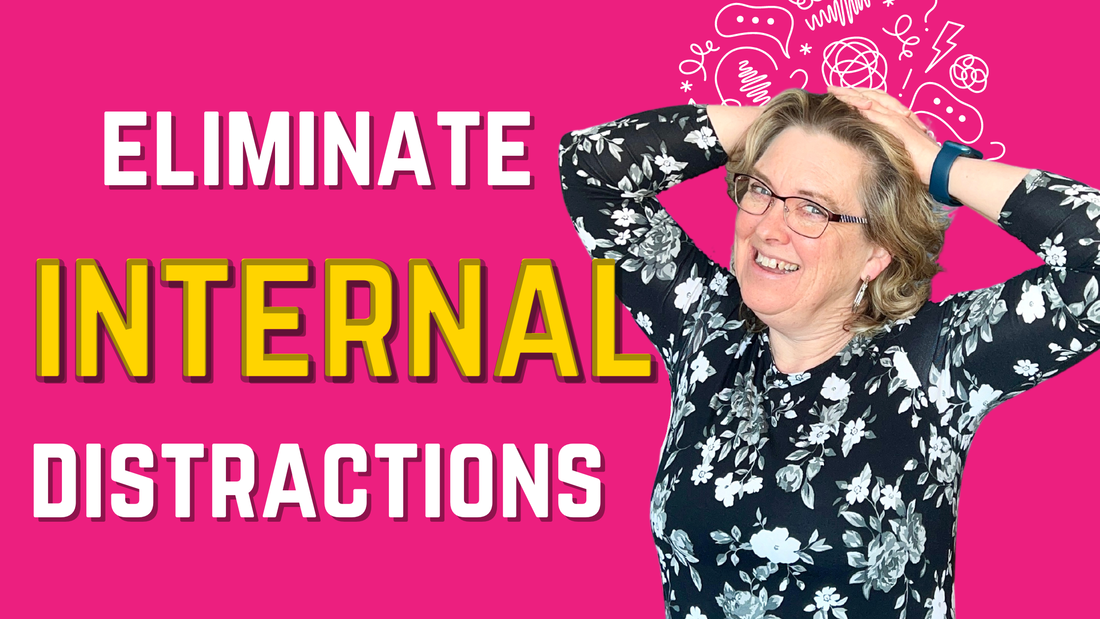
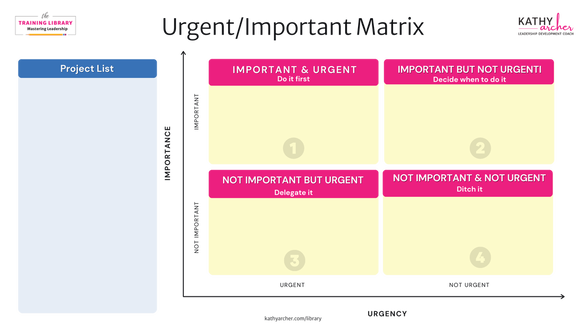
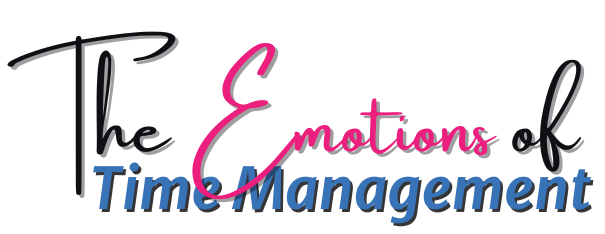


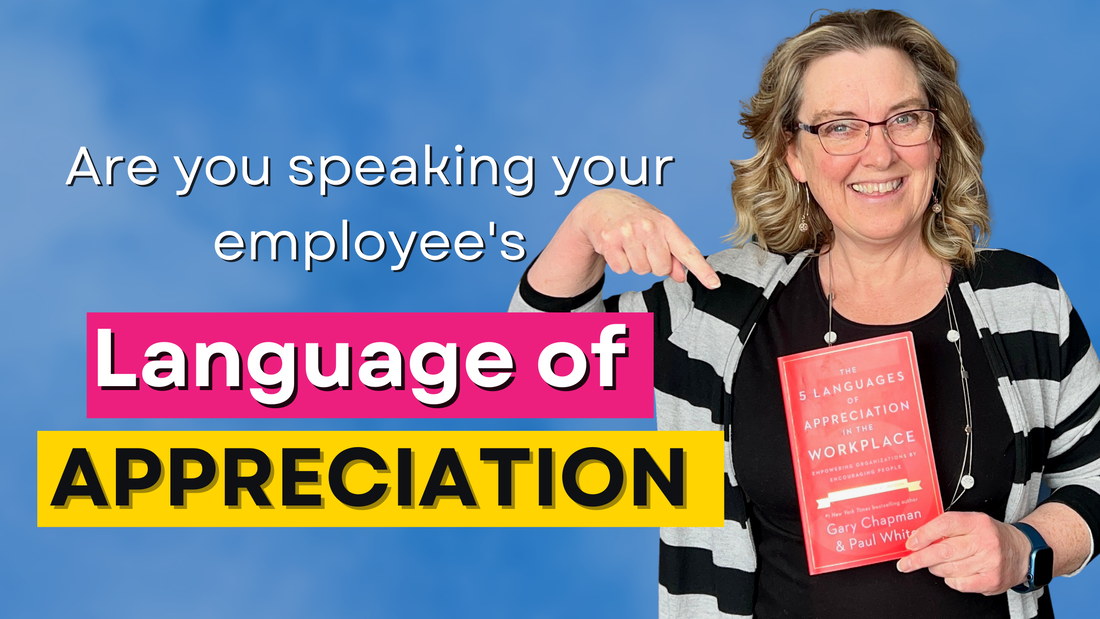

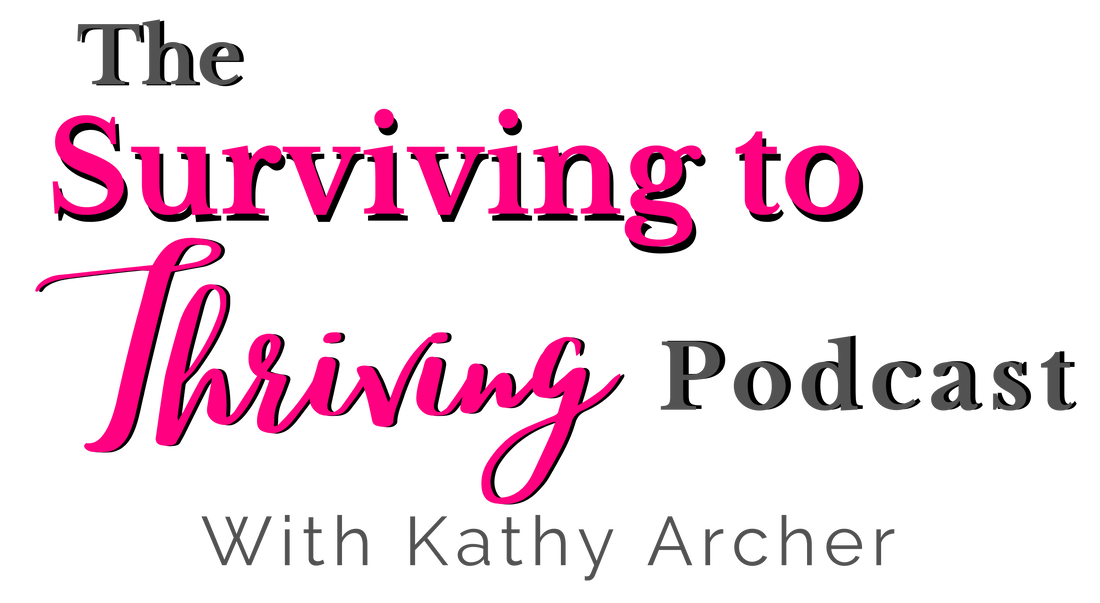
 RSS Feed
RSS Feed
